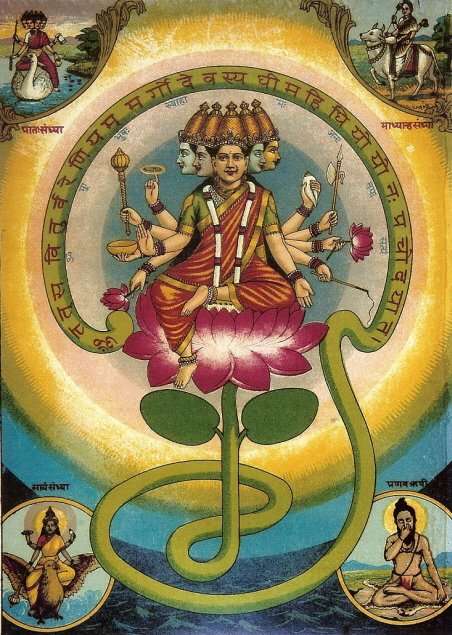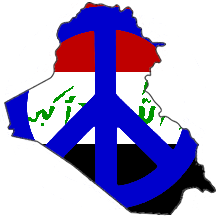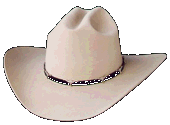
Om bhūr bhuvah svah
tat savitur varenyam
bhargo devasya dhīmahi
dhiyo yo nah pracodayāt
Originally the personification of the mantra, the goddess Gāyatrī is considered the veda mata, the mother of all Vedas and the consort of the God Brahma and also the personification of the all-pervading Parabrahman, the ultimate unchanging reality that lies behind all phenomena. Gayatri Veda Mata is seen by many Hindus to be not just a Goddess, but a portrayal of Brahman himself, in the feminine form. Essentially, the Goddess is seen to combine all the phenomenal attributes of Brahman, including Past, Present and Future as well as the three realms of existence.[citation needed] Goddess Gāyatrī is also worshipped as the Hindu Trimurti combined as one. In Hinduism, there is only one creation who can withstand the brilliance of Aditya and that is Gāyatrī. Some also consider her to be the mother of all Gods and the culmination of Lakshmi, Parvati and Sarasvati.
Gāyatrī is typically portrayed as seated on a red lotus, signifying wealth. She appears in either of these forms:
* Having five heads with the ten eyes looking in the eight directions plus the earth and sky, and ten arms holding all the weapons of Vishnu, symbolizing all her reincarnations.
* Accompanied by a white swan, holding a book to portray knowledge in one hand and a cure in the other, as the goddess of Education.
For more information about Gayatri Maa visit this site www.motherdivine.wetpaint.com
Source
What I find interesting is the similarity of names between Greek (and hence western) Gaïa, goddes of the earth, and Gāyatrī. Just a thought.












No comments:
Post a Comment